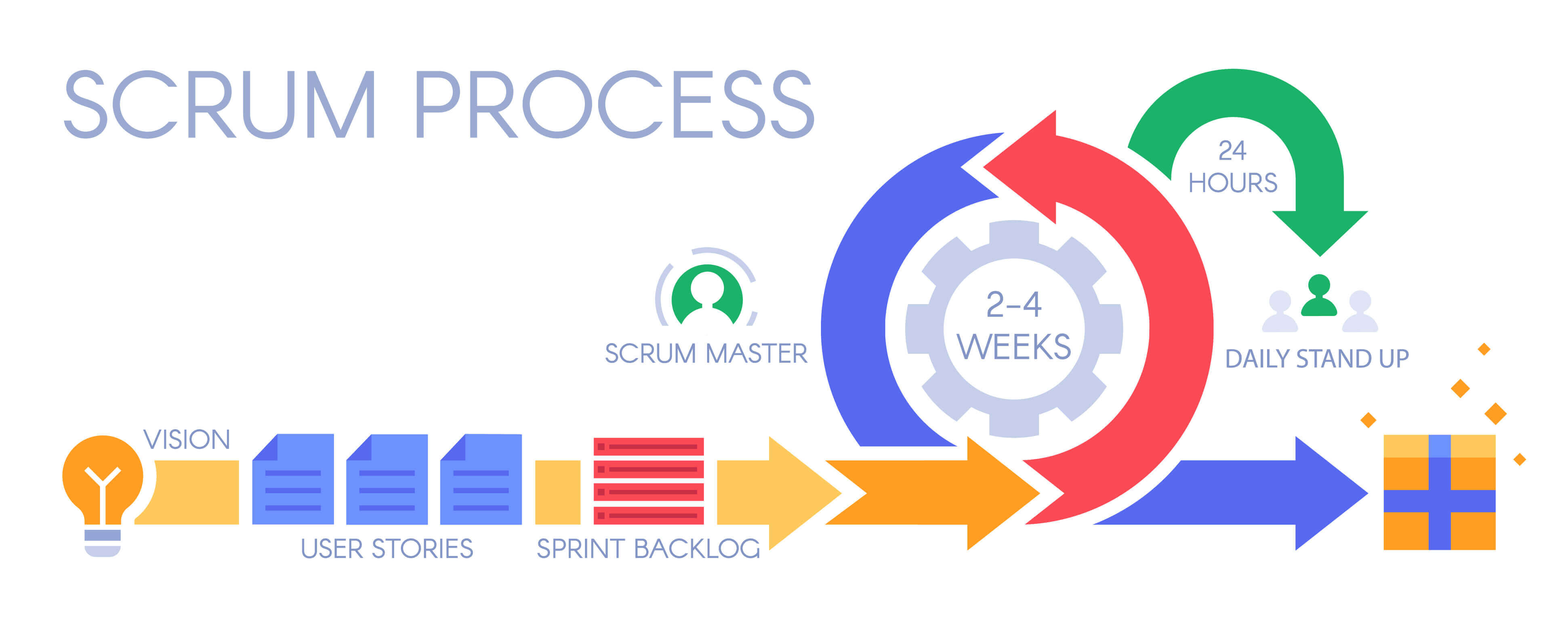Workflow management tools are some of the little modus operandi that make significant differences in today’s workplace. With more tools like Brief being released into the workplace every year, it is a vital necessity for organizations to understand and leverage the most appropriate tools for uttermost productivity.
Scrum and Kanban are two such workflow management methods designed to help companies increase work efficiency. The two terms, Scrum and Kanban, are often (inaccurately) used to mean the same thing—mainly because both frameworks are developed to conveniently enhance productivity with little effort in an almost similar manner.
On the surface level, it’s easy to point out the outstanding differences between Kanban and Scrum practices—since they work on the same principles, but the devil is in the details of the methodologies applied by each tool. It is therefore important to screen through the differences between Kanban and Scrum before choosing one that’s most suitable for your work environment.
What’s Kanban?
Kanban is a system designed to manage workflow in a manner that helps your team visualize the work, increase efficiency and keeps the team agile. Using this framework, your team can see, in real-time, the capacity and progress of every task during a Sprint.

The basic principle behind Kanban is to encourage lean manufacturing by maximizing productivity and minimizing wastes to create more value for customers.
“Kanban” is a Japanese word that means “billboard”. Initially used by Toyota, a manufacturing company, the methodology was adopted by Agile software development companies and has since gained global recognition and has been adopted by businesses across different fields.
What’s Scrum?
Simply put, Scrum is a tool used by teams to break down work into small, easy-to-do tasks that can be finished by a team within a predetermined timeframe. To make the execution of the tasks efficient, Scrum assigns your team members the following prescribed roles:
- Project owner
- Scrum master
- Team Members
That is to say, without getting too detailed, that Scrum Board or simply Scrum, is a tool that helps teams make Sprint tasks visible. With this, your team can update the board with items or tasks that must be done during the current Sprint to deem the sprint a success.

A Scrum Board can take many physical or virtual forms, but it serves the same purpose using the same methodology no matter how it looks.
Similarities Between Kanban and Scrum
Both Kanban and Scrum are popular frameworks that empower teams within organizations to break down tasks to complete them conveniently and efficiently. The two tools allow for optimization of efforts throughout a Sprint and both focus on a visual representation of workflow to keep all team members in the know on the work in progress and what’s to follow.
Interestingly, many Kanban teams also use either a physical or a virtual version of Scrub as an additional workflow visualization tool. Even though Scrum is a more prescriptive option (less ambiguous), most Scrum Board teams, in the long-run, usually end up adopting some principles of Kanban which help enhance the visibility of workflow in their projects.
When choosing between the two methodologies, always remember that you don’t have to make an individual distinction between Kanban and Scrum since the two frameworks can be used together.
Kanban vs. Scrum
While both Kanban and Scrum are highly interactive, and visual-oriented frameworks which aim to optimize work and reduce waste; they have many differences as outlined on the table below:
| Kanban | Scrum | |
| Focus | Focuses on continuous improvement of quality, productivity, and efficiency. | Focuses on saving time and money. |
| Roles and Responsibilities of team members | There is no provision for pre-defined roles. All team members are encouraged to work collaboratively towards the completion of the tasks assigned. | Every member of the team is assigned a pre-determined role with specific goals and timelines. |
| Addition of new tasks | New tasks can be added to an on-going iteration as long as the capacity to carry it out is sufficient. | New tasks cannot be added to an on-going iteration. |
| Deliverables and Timelines | Deliverables are submitted continuously on-demand basis. The due dates are pre-determined by the organization. | Deliverables are submitted at the end of the sprints. The Scrum master determines the deadlines. |
| Sub-division of the project | The entire project takes the form of a single-threaded task. | The project is subdivided into batches or Sprints. |
| Work Prioritization | Uses a workflow system that lets team members proceed to the next task only after completion of the task at hand. | Team members are free to work on any task as long as the tasks are within the same Sprint. |
| Modifications | Changes/adjustments can be made on a work-in-progress. | Changes/adjustments on work in progress are discouraged. |
| Measurement of Productivity | Productivity is measured using “cycle time,” the time taken to produce a complete functional unit. | Productivity is measured based on how fast a Sprint is completed. |
When to use Scrum?
Scrum is a framework methodology that works best in a project whose requirements are fast changing. The methodology calls for a self-organizing team—a team that can quickly adjust to disruptions which might have negative impacts on the project.
When to use Kanban?
Unlike Scrum, Kanban allows for visual management of a project workflow in a manner that team members can communicate and see the work in progress, in real-time. This methodology is suitable for a team that’s making good progress but still needs some modifications to make the project process work better.
Bottomline
While Scrum is an Agile process that lets your teams focus on meeting your objectives in the shortest time, using the least resources, Kanban is more of a visual system for overseeing a project. Scrum focuses on solving problems on the backlog within timelines while Kanban, on the other hand, focuses on the dashboard; allowing team members to collaborate, share responsibilities, and encourages better productivity and efficiency. Again, the two frameworks can go hand in hand.
For more information on Kanban Boards and Scrum Boards, feel free to get in touch with Brief, and we’ll be happy to help you out.




